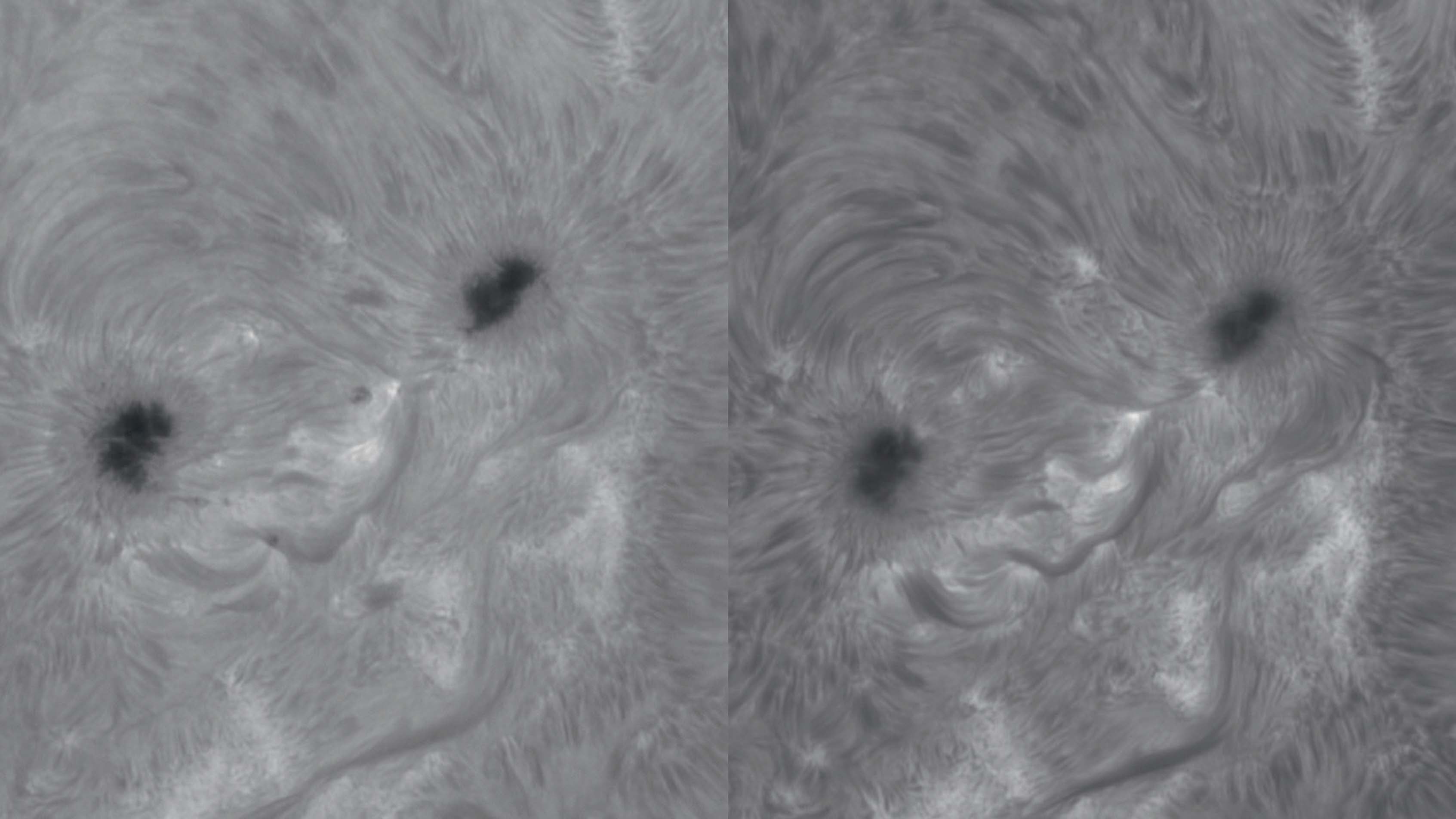Two filters combined for Hα solar observation
What is the benefit of filter stacking?
More contrast for Hα solar observation and photography through the combination of two filters.
 The Sun in the light of the Hα spectral line with two different bandwidths of 0.065nm (0.65Å) and 0.045nm (0.45Å). A.Murner
The Sun in the light of the Hα spectral line with two different bandwidths of 0.065nm (0.65Å) and 0.045nm (0.45Å). A.MurnerDouble Hα filters
Thanks to its dynamic surface, the Sun is one of the most exciting and variable objects for amateur astronomers, especially when observing the chromosphere with Hα filters. There are now a large number of filters or complete Hα telescopes on the market. Additionally, so-called double stack modules are often on offer. This is a second filter that is designed to provide better contrast when combined with an existing filter.
In order to be able to observe the chromosphere, white light from the photosphere must be blocked and at the same time Hα lines must be allowed to pass through. The shape of the transmission curve of a Hα filter corresponds to a Lorenz bell curve. An important criterion for how clearly the structures of the chromosphere stand out is the width of the transmission window, which is expressed as the full width at half maximum or FWHM. The lower the FWHM, the better the contrast.
One way to further improve contrast is to combine two filters, known as filter stacking.
The exact FWHM is often unknown and manufacturer's specifications are subject to certain uncertainties. Most of the filter systems on the market have a FWHM of between 0.05nm and 0.1nm. Even in the worst case – this corresponds to a FWHM ratio of 1:2 – which gives a multiplication factor of about 0.85, and so a slight increase in contrast can be expected. Regarding the underlying calculations, it should be noted that perfect filters with 100% transmission at the central wavelength were assumed. In practice, however, the transmission maximum deviates from this and is typically around 60%, which significantly reduces the brightness of the image when filter stacking is used. This can make detailed observations more difficult, especially at higher magnifications. Photographs need longer exposure times, which is a downside since the daytime seeing tends to be quite poor.
In practice, it makes sense to start with a single filter and adjust it either visually or using a computer screen live image for the best possible contrast. The central wavelength of the filter is on the Hα line. The second filter is then mounted and also optimised visually.
Observing with extra-narrowband filters
The effect of different bandwidth filters has an impact on the result: while with a wider bandwidth system of around 0.07nm the photosphere still shines clearly through, which is particularly noticeable at the edge of the Sun, it is practically invisible at 0.045nm. Structures on the surface are significantly higher in contrast and seamlessly merge into edge structures and prominences. At the same time, the overall image becomes darker, so effective scattered light protection is advisable when observing.
Author: Mario Weigand / Licence: Oculum Verlag GmbH
